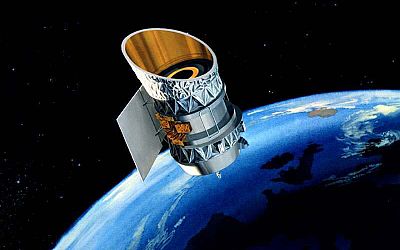If the two satellites were to collide, the debris could endanger spacecraft around the planet.
Two defunct satellites will zip past each other at 32,800 mph in the sky over Pittsburgh on Wednesday evening.
If the two satellites were to collide, the debris could endanger spacecraft around the planet.
It will be a near miss. LeoLabs, the satellite-tracking company that made the prediction, said they should pass between 50 feet and 100 feet apart around 6:39 p.m. local time.
One satellite is called the Infrared Astronomical Satellite (IRAS). Launched in 1983, it was the first infrared space telescope and operated for less than a year, according to the Jet Propulsion Laboratory.
The other is called the Gravity Gradient Stabilization Experiment (GGSE-4), and was a U.S. Air Force experiment launched in 1967 to test spacecraft design principles, according to NASA.
The two satellites are unlikely to actually slam into each other, said LeoLabs CEO Dan Ceperley. But predictions of the precise movements of fairly small, fast objects over vast distances is a challenge, Ceperley told Live Science.
If they did collide, "there would be thousands of pieces of new debris that would stay in orbit for decades," Ceperley said. "Those new clouds of debris would threaten any satellites operating near the collision altitude and any spacecraft transiting through on its way to other destinations. The new debris [would] spread out and form a debris belt around the Earth."
LeoLabs uses its own network of ground-based radar to track orbiting objects. Still, Jonathan McDowell, a Harvard-Smithsonian Center for Astrophysics astronomer who tracks satellites using public data, said the near-miss prediction was plausible.
It's pretty common for bits of orbital debris to have near misses in orbit, Ceperley said, which usually go untracked. It's more unusual, though, for two full-size satellites to come this close in space.
"Events like this highlight the need for responsible, timely deorbiting of satellites for space sustainability moving forward. We will continue to monitor this event through the coming days and provide updates as available," LeoLabs said on Twitter.
- In Photos: A Look at China's Space Station That's Crashing to Earth
- Earth from Above: 101 Stunning Images from Orbit
- 11 Fascinating Facts About Our Milky Way Galaxy
Originally published on Live Science.












